
>
Attractions > Jeju Island
Jeju Island

 more+
more+
-
Seongsan Sunrise Peak was formed after a volcanic eruption in the ocean about 100,000 years ago. The crater of Sunrise Peak, which is 180m above sea level, consists of rock peaks along its rim. Originally, the peak was formed as an island. Sands and pebbles had been accumulated between the peak and Shinyang beach and eventually the peak became the part of main island. Form the time of old, the sunrise from the peak has been considered the best scenic attraction in Jeju. The view of the sunrise here is truly remarkable.
 more+
more+
-
Udo is the biggest island among 62 sub-islands of Jeju. It is located on the far east end of Jeju. Entire island is one big lava zone with gentle slope and rich soil. The islet is 17km total round, 2.5km from east end to west end, and 3.8km from south end to north end. Total population is about 1,600 on this islet. There are 8 scenic wonders of Udo: day and night(Judan-myeongwol and Yahang-eobeom), sky and earth (Cheonjin-gwansan and Jidu-cheongsa), front and back (Jeonpo-mangdo and Huhae-seokbyeok), and east and west (Dongan-gyeonggul and Seobin-baeksa). Main attractions are Udobong, Geomeolae, Hongjodangwae beach and Hagosudong beach. Peanuts, shallots, garlic, turban shall, agar, and gulfweed are famous.
 more+
more+
-
Manjanggul Lava Tube is a 7.4 km-long lava tube locally with a multi-level structure. It is one of the largest lava tubes in the world having a main passage with a width of up to 18 m and a height of up to 23 m. Numerous lava tubes are found worldwide, but Manjanggul Lava Tube is an outstanding example because it has a well-preserved passage shapes and internal micro-topographic features in spite of its very old age. Thus the cave possesses significant scientific and conservation values.
 more+
more+
-
Jeju World Natural Heritage Center is a new attaction for Korea ecotourism. The center is located at Geomunoreum. Geomumoreum, UNESCO World Natural Heritage, was selected as one of top 10 ecotourism model by Ministry of Environment. (2010)
Jeju World Natural Heritage Center opened on September 4 to advertise the value of World Natural Heritages in Korea.
 more+
more+
-
Having been built in what was once a useless wasteland of sand, Hallim Park is now on the most popular tourist attractions in Jeju. It is located in Hallim-eup, west of Halla mountain (1,950m), and 33km from Jeju-si. There are other scenic attractions around Hallim Park, such as Hyeopjae, Geumneung beach and Biyang-do.
 more+
more+
-
According to a legend, Cheonjeyon Falls means "the pond of God" where nymphs descend to take a bath. The first cascade of Cheonjeyon Waterfall is 22 m high, 12m wide and the water forms a pond 21 m in depth. The water flows farther along to form the second cascade of 30 m high. Dampalsu Trees (Korean Natural Monument No. 163) are growing in the valley of the fall. You can also see Songyeopnan, Castanopsis cuspidate, Shiny Xylosma, and Camellia in the subtropical forest.
 more+
more+
-
Jutting out at the eastern seashore of Jeju Island, Seopjikoji is one of the most scenic views with the bright yellow canola and Seongsan Sunrise Peak as a backdrop. The pristine beauty of Jeju can be seen in Seopjikoji. Shinyang Beach, a meadow filled with canola flowers, peacefully grazing Jeju ponies, a rocky sea cliff, and a towering legendary large rock (Sunbawe) all combine to make nature s masterpiece.
 more+
more+
-
Near Jungmun Beach, a popular spot for vacationers and locals, is an impressive pillar rock formation named Jusangjeolli Cliff in Daepo.The formation looks like a piece of art that has been sculpted delicately with a sharp tool. Jusangjeollidae usually refers to vertical pillar shaped rocks in a rectangular or hexagonal shape and is often composed of basaltic lava. The waves that hit the pillars are also interesting to see as, when the tide is high, they can leap up to 20 meters high. Jungmun Daepo Haean Jusangjeollidae is designated as Natural Monument No. 443.

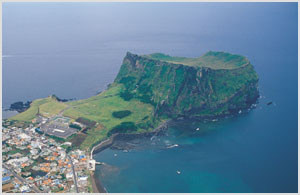
 more+
more+
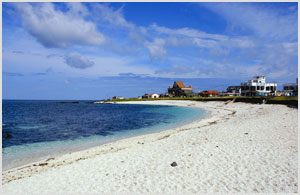
 more+
more+
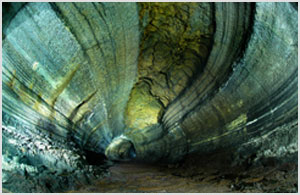
 more+
more+
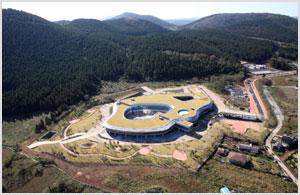
 more+
more+
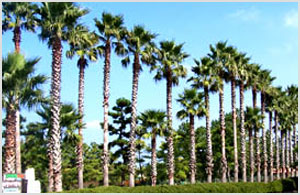
 more+
more+
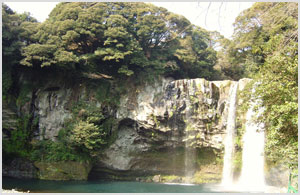
 more+
more+
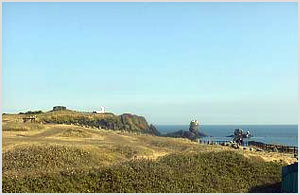
 more+
more+
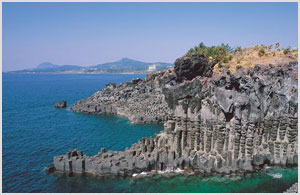
 more+
more+


